Aerodynamic Study of Albatross Wings Using XFLR5 and Ansys Fluent
Abstract
Abstract
Gmeet: https://meet.google.com/cza-yyqv-pzw
Aim:
The aim of the project was to conduct an aerodynamic study of the Albatross bird wing, and compare its performance with different wing shapes, such as rectangular and trapezoidal, which are commonly utilized in Unmanned Aerial Vehicles. The major focus lies on the type of lift distribution achieved by the Albatross wing, and using numerical simulations to prove the superior performance of different types of lift distribution. Parameters such as Lift distribution, downwash, induced drag, viscous drag, and wingtip vortices.
Introduction:
The albatross, the largest bird on Earth, with a wingspan ranging up to 3.3 meters, is known for its high aspect ratio wings that generate significant lift with minimal vortices, without the use of wingtips. Albatross wings are characterized by higher values of aspect ratio (AR), lift to drag ratio (L/D), and wing loading (W/S). An uncharacteristic feature of the albatross wing is observed when we carefully focus on its wingtips. No deflection is noticed at its wingtips, which is not seen in the typical elliptical wing distributions (ELD). This can be explained by a different type of lift distribution called the bell-shaped lift distribution (BSLD), which, unlike the ELD, does not exhibit a total and constant downwash from root to tip. Bell-shaped lift distribution tends to be more efficient than any other form of lift distribution, given certain initial assumptions used by Ludwig Prandtl. The assumptions used by Ludwig Prandtl in his 1933 paper, later translated by Warren Philips and Douglas Hunsaker, were constant weight, non-fixed wingspan, fixed moment of inertia of lift, and the proportionality coefficient is independent of location along the wingspan. Here proportionality coefficient is one that relates the bending moment along the wingspan to the weight of the spar. It is important to realize that it essentially means that the chord is independent of span location, which is nothing but a rectangular airfoil. Prandtl’s work was a one-of-a-kind breakthrough, relating aerodynamic efficiency to structures. These unique advantages are possessed by Bell-shaped lift distribution, which can be widely used in Unmanned Aerial Vehicle (UAV), which often tend to require a high lift-to-drag ratio, high efficiency, and endurance.
This project strictly focuses on the aerodynamic analysis. The weight and stability analysis aspects associated with the bell-shaped lift distribution are beyond the scope ofthis project. Theoretical postulations of these principles are to be empirically validated throughout the course of this project.
Methodology:
GOE 173 (Albatross 6020) and NACA 4412 airfoils were used to perform the following simulations. GOE 173 is closely associated with the Albatross wing’s airfoil, hence, it was chosen for further simulations. Coordinates of the GOE 173 and NACA 4412 airfoil were plotted, and wing geometries were modelled using CAD software such as SolidWorks/Fusion360.
These designs were then imported into ANSYS Fluent in Design Modeller, where a cuboidal fluid domain was established.
Subsequently, the mesh was generated featuring named sections like inlet, outlet, wing, and wall, with conditions optimised to strike a balance between computational power and result accuracy. The velocity considered was 30 m/s
The plotted airfoils above were imported to XFLR5 in Direct Foil Analysis.
Following this, airfoil analysis was performed for varying angles of attack and Reynolds’ numbers. Reynolds’ number is a dimensionless number and provides a ratio between an inertial and viscous force.
The Reynolds number is calculated using the formula below:

The maximum and minimum values of Reynolds’ number considered for this analysis were 3,000,000 and 9,025, respectively. Although an increment of 10,000 was taken for analysis, a lot of middle values were also analysed to provide converging solutions.
Next, an Albatross-shaped wing was modelled on XFLR5, using about 108 sections and 2442 mesh elements to ensure accurate results. This model was then simulated on XFLR5, using the Ring Vortex (VLM2) analysis method with viscous flow at a headwind velocity of 15 m/s. All the other parameters were considered according to sea level conditions. The analysis was carried out between -2° to +2.5°, while keeping an increment of 0.5°. Beyond 2.5 degrees, the VLM2 Analysis method provides inaccurate results.
Later, rectangular and tapered wings were also simulated using the same procedure and detail mentioned above. But due to the highly converging nature of results, the analysis was done from -7° to 5°.
Boundary Conditions:
Inlet: Velocity Inlet [ 30m/s on ANSYS Fluent, 15 m/s on XFLR5]
Outlet: Pressure Outlet
Wall: Pressure Far Field
Wing: Wall
Reference Values: Wing Area = 0.404 m^2 (BSLD), 0.760 m^2 (Rectangular), 0.4 m^2 (Tapered)
Initialization: Standard
Upon conducting simulations and confirming graph convergence, pressure contours were obtained, with the lift and drag values calculated using function calculators in ANSYS.
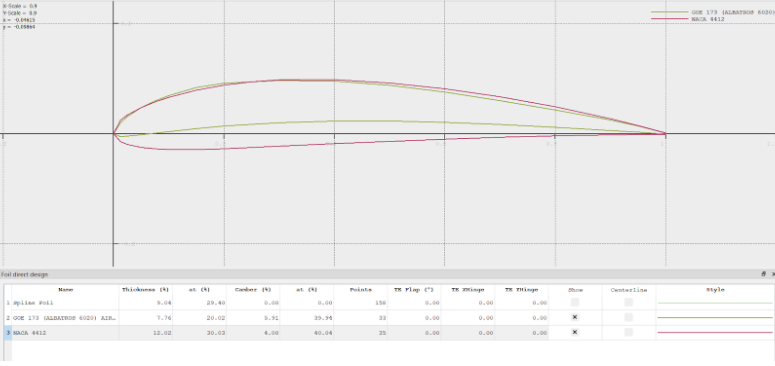


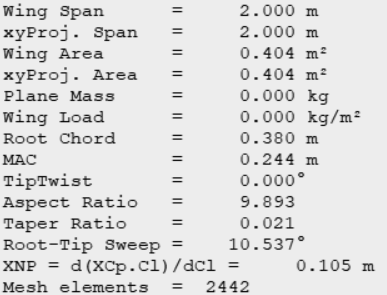
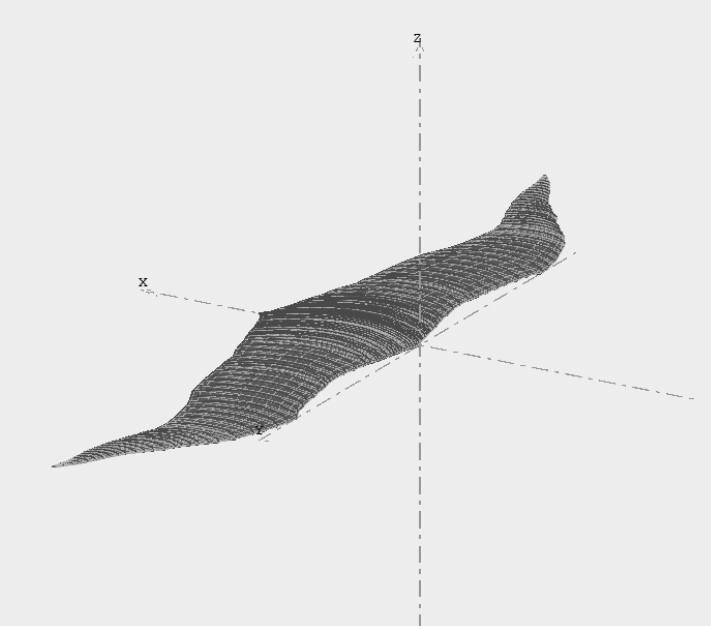
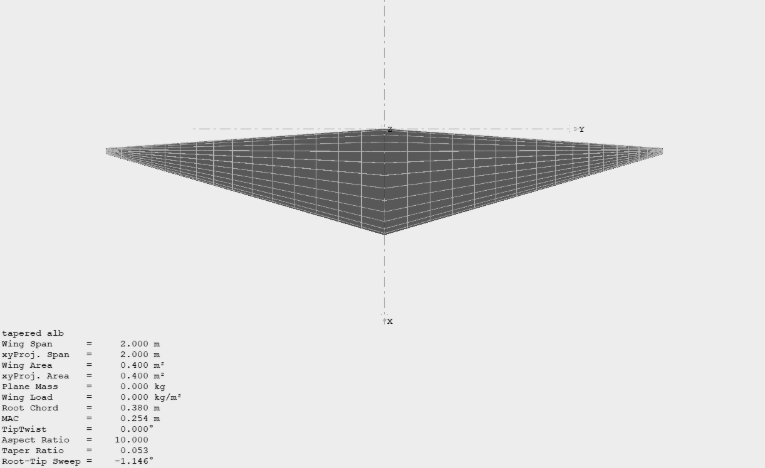
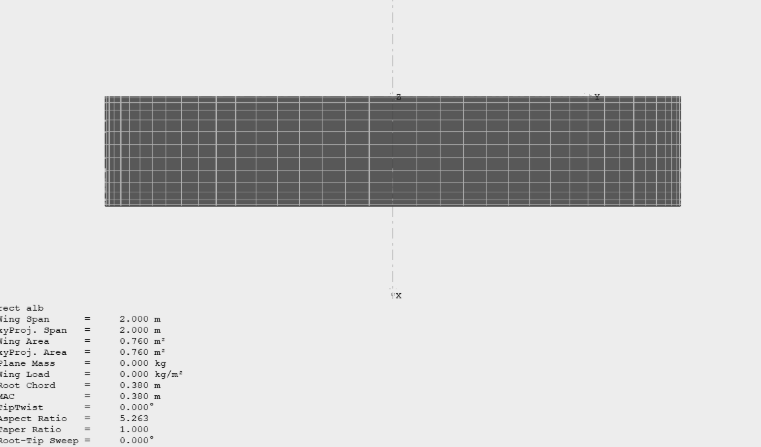
Results:
ANSYS (Pressure Contours and Plots)
GOE 173 ( Albatross 6020 )
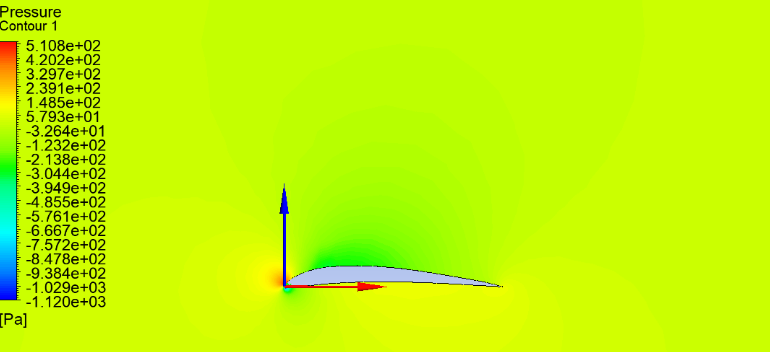
NACA 4412

XFLR5 Simulations
Albatross Wing:

Bell Shaped Lift Distribution (AOA = 2.5)

Downwash (AOA = 2.5)

Steam (AOA = 2.5)



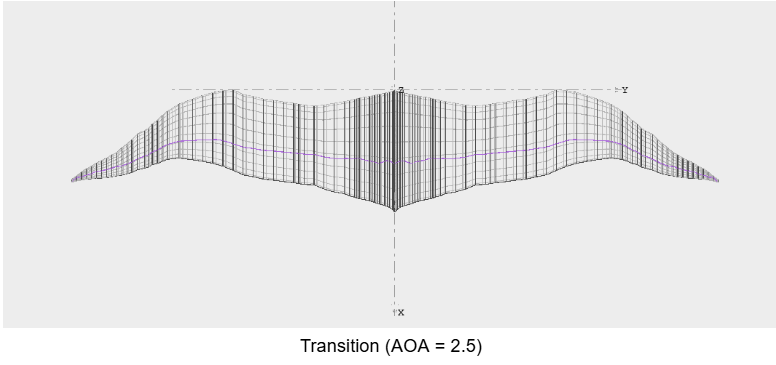
Rectangular Wing
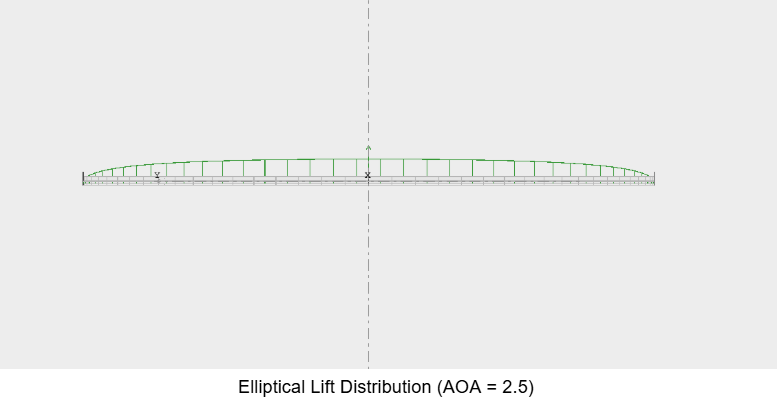
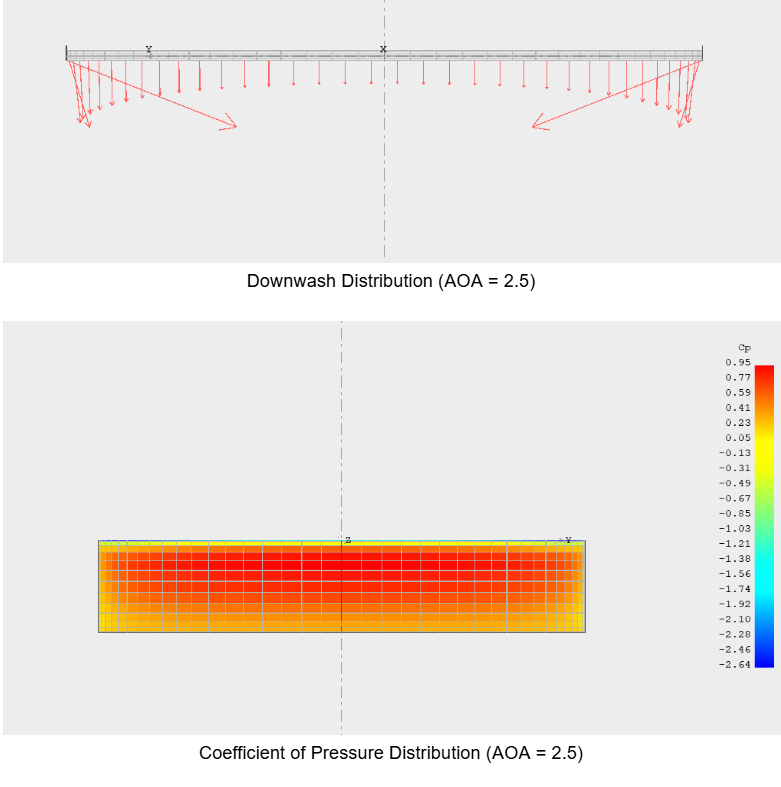
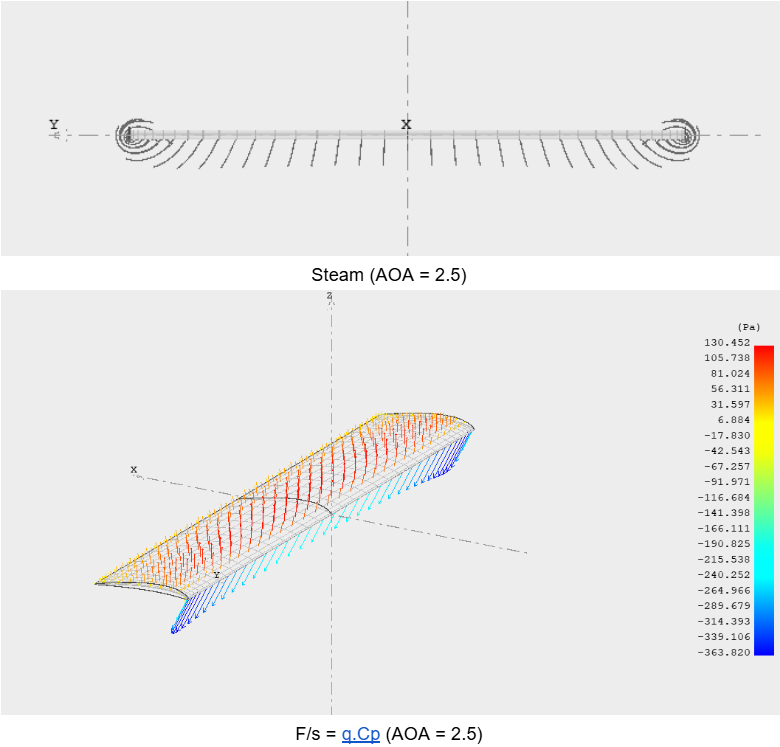
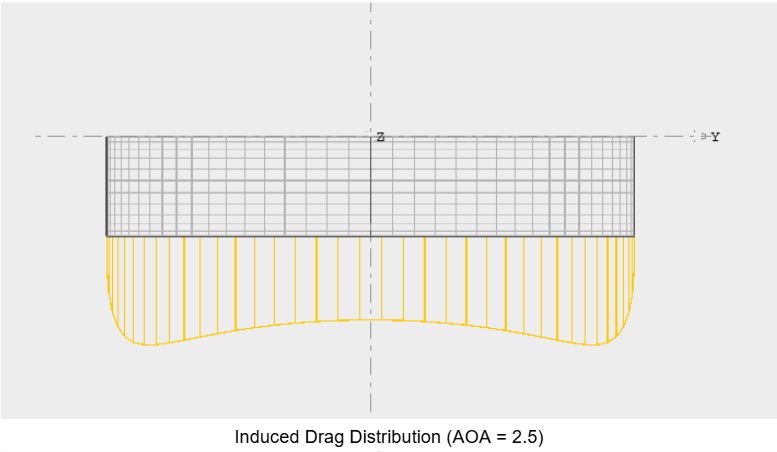

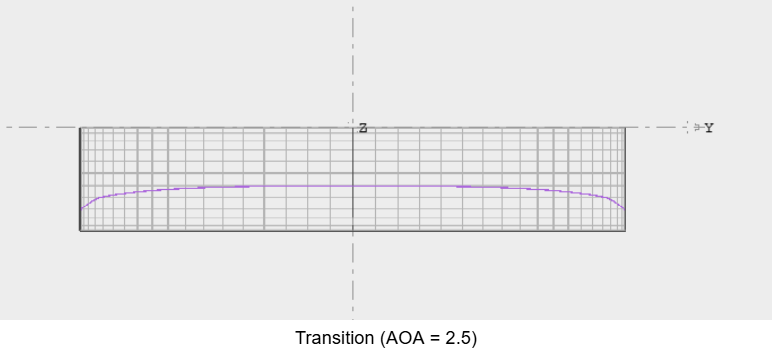
Tapered Wing
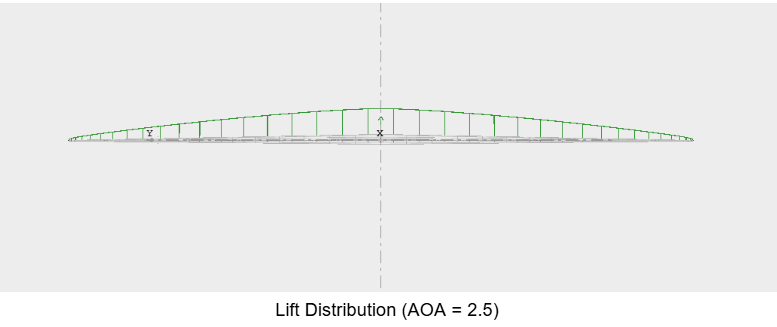
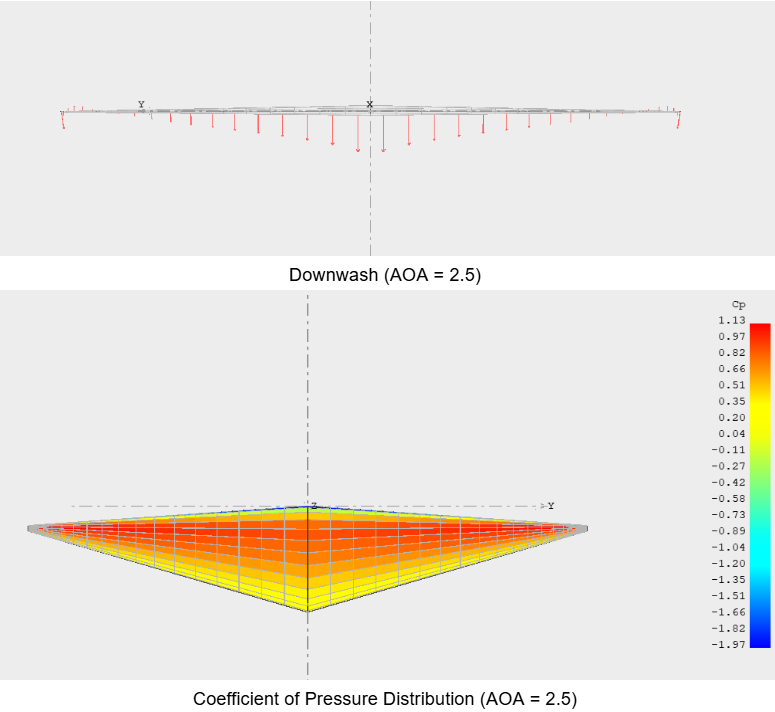

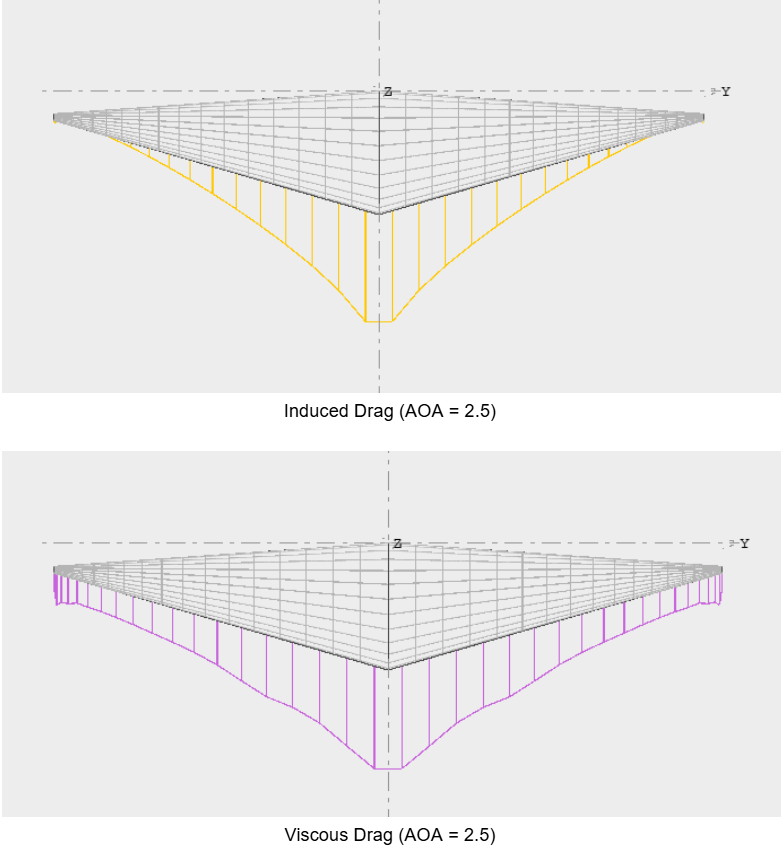
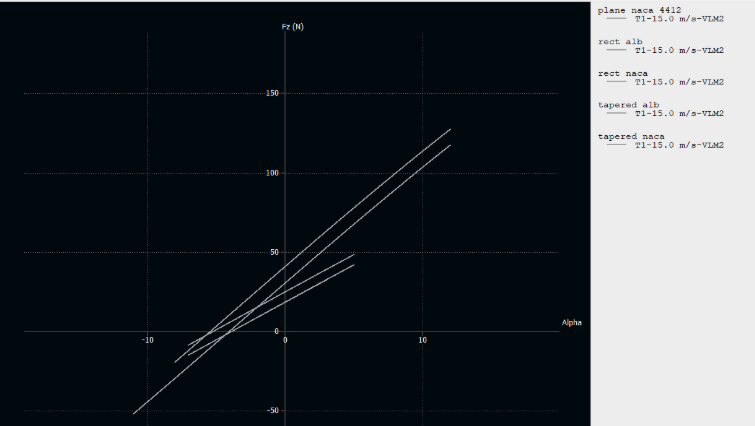
Lift force for all airfoils
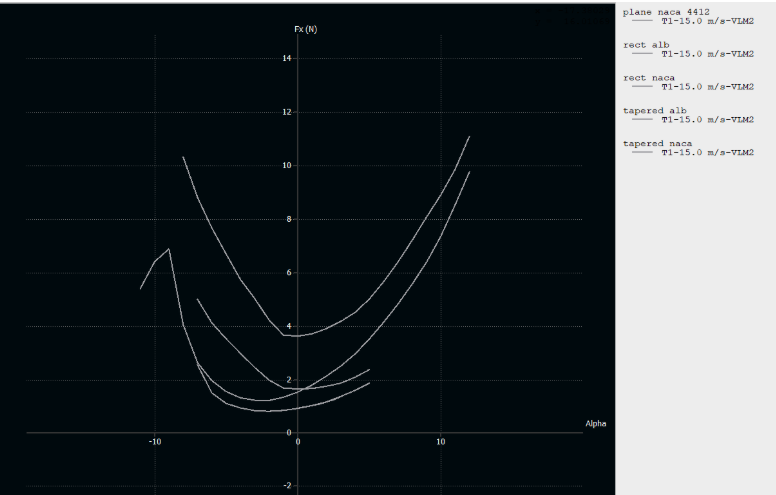
Drag Force for all Airfoils
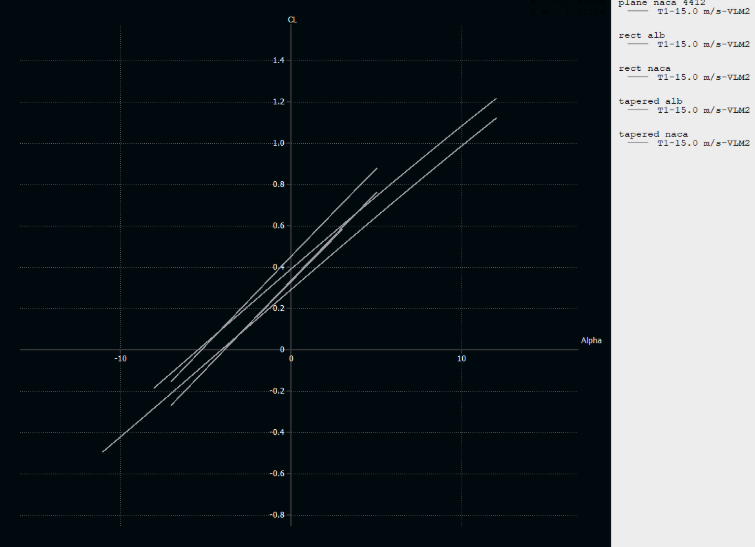
CL vs Alpha
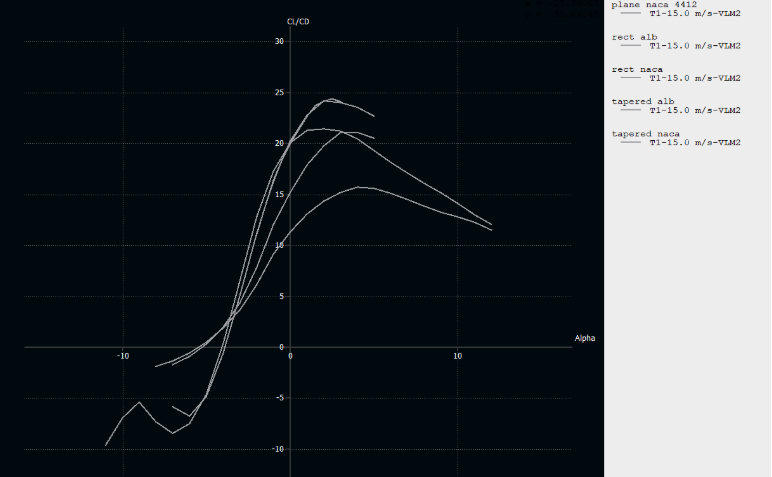
CL/Cd vs Alpha
Conclusion
Following successful CFD simulations and airfoil analysis, it can be observed that the Albatross-shaped wing produces a Bell-shaped lift distribution, while a rectangular and tapered wing produces an elliptical lift distribution. The wing when compared to other plan forms with two airfoils NACA 4412 and GOE 173 overcomes other designs in CL/CD, achieving Bell Shaped Lift Distribution, streamlined flow in low Reynolds Number group and wingtip vortices generation. It should be noted how the downwash transitions in the Bell Shaped Lift Distribution (BSLD). This is a reason for lower induced drag. One more important property of the BSLD is shedding of vortices, which, unlike the Elliptical Lift Distribution, occur at around 70% of the wingspan, which implies that the magnitude of load acting on the tips of the wing is virtually zero. This explains why deflections are not observed on the wingtips of an albatross in soaring flight mode. A transition trend is observed from downwash to upwash for a wing with BSLD, and this is the reason behind tapering lift values spanwise and zero loads acting on the tips of the wing.
According to Ludwig Prandtl, Bell-shaped lift Distribution can facilitate an increased wingspan of 22.5% whilst having 11% less induced drag acting on the wing. However, as a higher lift generation, it generated a little higher drag when compared to other plan forms, which is usual due to the high camber value. This wing configuration fits well in long-range and endurance surveying UAV’s providing the ability to smoothly fly during its mission.
References
BIO-INSPIRED GREEN CONCEPT OF ALBATROSS BIRD WING FOR HIGH FUEL EFFICIENCY.
Albatross and Falcon-Inspired Bionic UAV: An Aerodynamic Analysis.
Report Information
Team Members
- Aryan Subramanian [Piston]
- Tuhina Gupta [Piston]
- Ayushman Rastogi [Piston]
- Atharva Nijasure [Piston]
- Raj Solanki [Piston]
Team Members
- Aryan Subramanian [Piston]
- Tuhina Gupta [Piston]
- Ayushman Rastogi [Piston]
- Atharva Nijasure [Piston]
- Raj Solanki [Piston]
Report Details
Created: May 25, 2025, 5:55 p.m.
Approved by: Vishal Kamath [CompSoc]
Approval date: None
Report Details
Created: May 25, 2025, 5:55 p.m.
Approved by: Vishal Kamath [CompSoc]
Approval date: None

